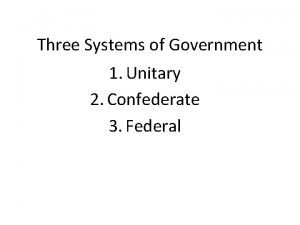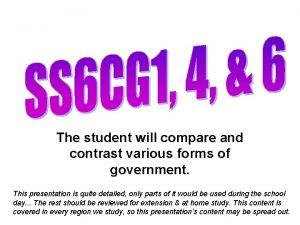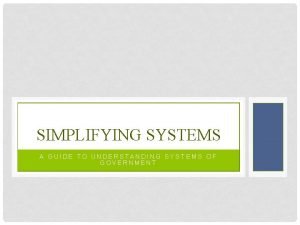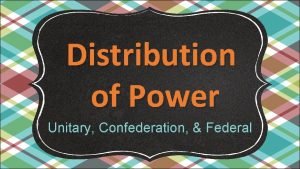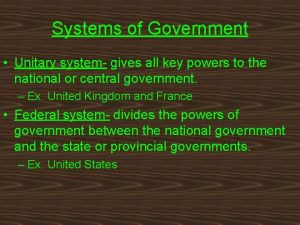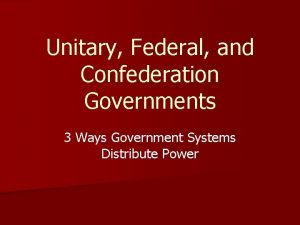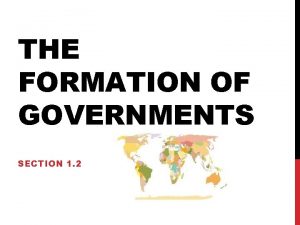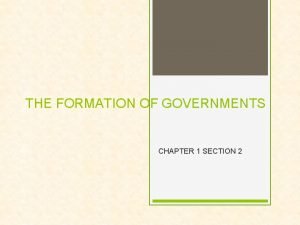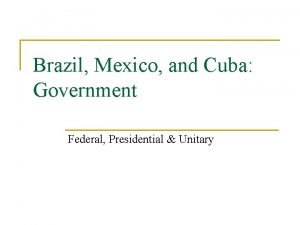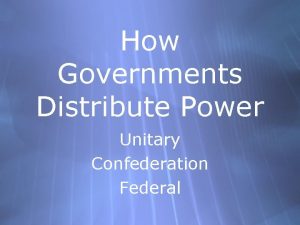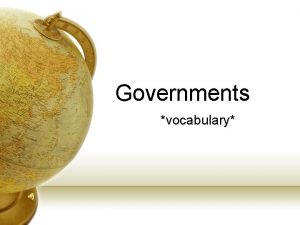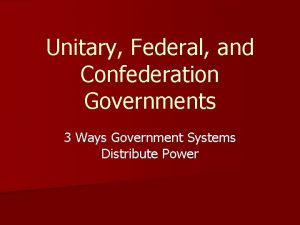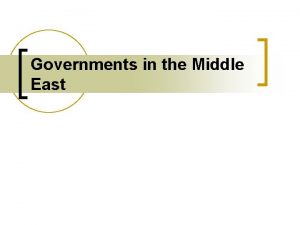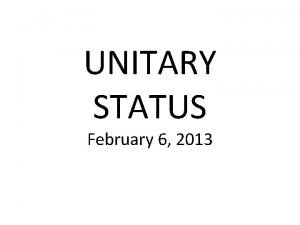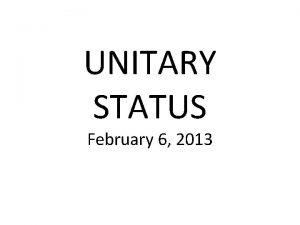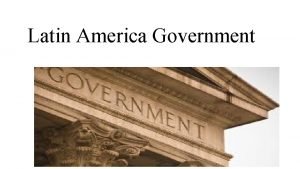1 2 The Formation of Governments Government Unitary











- Slides: 11

1. 2 – The Formation of Governments

Government: Unitary Systems • Gives all key powers to the national or central government • Central government has powers to create smaller forms of government • Limited sovereignty is granted

Government: Federal Systems • Powers divided between national and state/provincial governments • Sovereignty granted at every level – When did the U. S. develop this system? – What type of government was formed? What is it? • Examples Today: – Canada, Mexico, Australia

• Constitution = Plan that provides rules for government • Major purposes: 1) Sets ideals that people believe in & share w/ the constitution 2) Establishes basic structure & defines powers 3) Provides supreme law for the country • May be written or unwritten – 1787: U. S. Constitution is the oldest written version – Unwritten constitutions are based on years of legislature, decisions, and customs • Constitutional Government = Constitution has authority to place limits on the powers of the governed – Limited Government Constitutions

• Incomplete Guides: 1) Not all laws, customs can be spelled out – WHY? Name an example of this? 2) Doesn’t always reflect actual practices – Think of Communist China – WHY? • Goals: – Displayed in the Preamble – p. 14 Constitutions

• Framework: – Main body = plan for government – Federal States = description of relationship b/w national & state governments – Describe procedures for amendment process – Divided into articles & sections • U. S. = 7 articles & 21 sections • Highest Law: – The superior, morally binding force – Authority from the people – WHY? – What is constitutional law? What does it do? Constitutions

Politics & Government • Politics = the effort to control conduct & policies of government • Why do people participate in politics? What benefits are offered? • Politics help manage conflicts in society • What problems do people have with politics? • Multiple Learning Styles – p. 14

A Complex World: Inequalities • Industrialized Nations: – – Large industrial base Advanced technology Higher standard of living U. S. , France, Australia • Developing Nations: – Beginning stages of industrial development – Average incomes at best – Starvation, disease, & turmoil prevail – WHY? • Newly industrialized = Mexico, South Korea, etc.

Levels of Development

• All states are sovereign • Global Interdependence = people & nations interact/depend on one another • What happens in one place can & will affect someplace else – WHY? • Interdependence is increasing: – Industrialization & technology – What are some example of this? • Effects everyone – What are some positives & negatives of this? Interdependence

Nonstate International Groups • Terrorist & National Liberation organizations – Politically motivated & use violence – WHY? – Name some examples? Why are they significant today? • Multinational corporations & International Organizations – Developing economic growth & profit – WTO, General Motors, Sony, etc. – What other companies are world wide economic powers?
 What is a unitary system of government
What is a unitary system of government Unitary form of government
Unitary form of government Confederal system diagram
Confederal system diagram How is power distributed in a unitary government
How is power distributed in a unitary government What is a unitary system of government
What is a unitary system of government Government with all key powers at the national level
Government with all key powers at the national level Federal system
Federal system The formation of governments 1-2
The formation of governments 1-2 The formation of governments 1-2
The formation of governments 1-2 Formation initiale vs formation continue
Formation initiale vs formation continue Cross elasticity of demand
Cross elasticity of demand Is cuba federal or unitary
Is cuba federal or unitary
